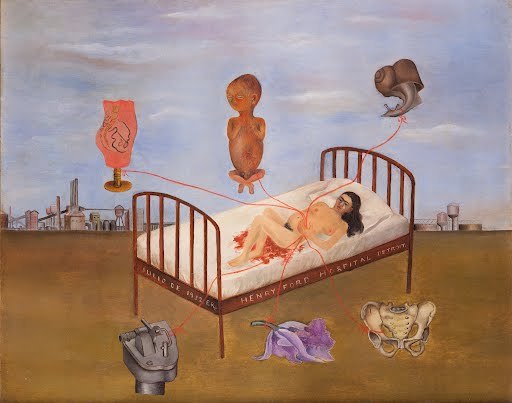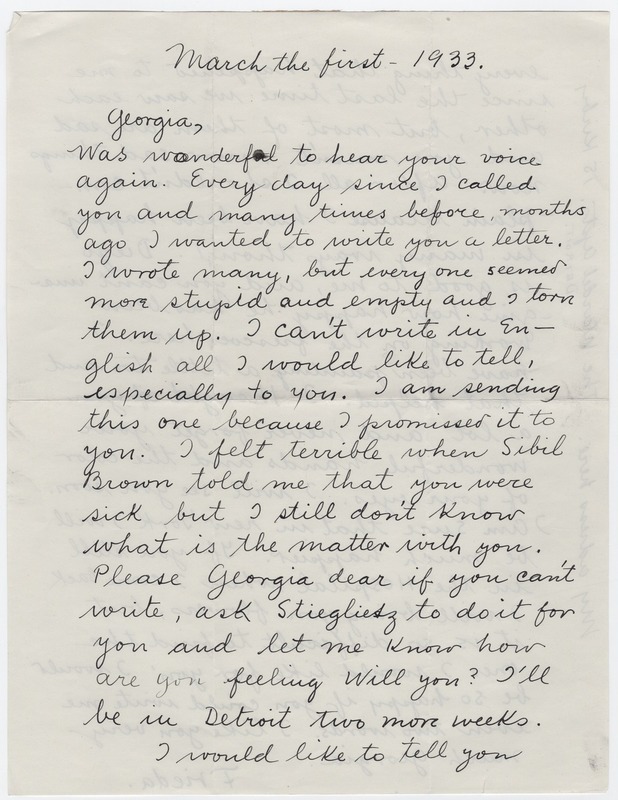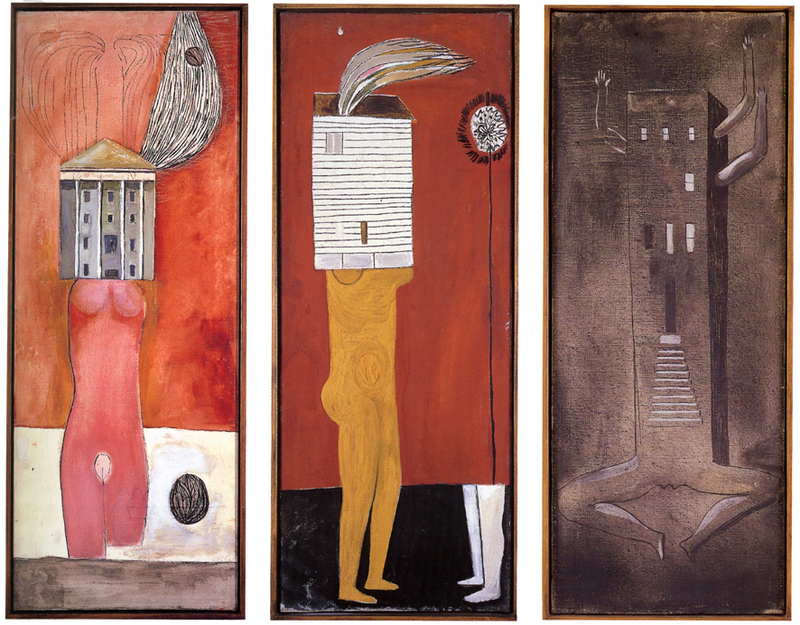Identity: Culmination of Effect
Kahlo becomes an even more interesting example of how female artists identities were/are affected by gender based restrictions when we explore this duality further. In her work Henry Ford Hospital we can see this duality expressed in many ways. Painted shortly after a miscarriage at the Hospital there is a profound feeling of loss however she clearly stated that she had no intention of having children. No one could argue that this is a loss none the less but this also shows the connection to her deeply conditioned traditional view of a mothers importance/responsibility to her family or husband. There is a dreary connection to Detroit industry in the background as a place she hates but at the time she also spoke of how happy her husband was working on the frescos at the Detroit Museum of Art.
Below there is an interesting letter Frida Kahlo wrote to Georgia O’Keeffe in March of 1933 that greatly underlines the problems created in these traps for both Artists. Kahlo addresses concern for O’Keeffe in her current problems with identity (as a result of public pressures about her work), states how much she appreciates O’Keeffe’s beauty and work by using specific detail, and unknowingly conveys the duality within her own identity struggle as she speaks about her husbands work in Detroit.
The struggle with identity continues on in time to other female artist as they try and find a way to maintain their expected roles as caregivers and mothers while fulfilling their own personal needs as artists. Louise Bourgeois created an early series in her career entitled Femme Maison which is a direct reflection of this position.
The imagery shown here applies the female form reduced down to gender identifying parts dominated by a domestic architectural construct serving as the head of the figure. Although the statement being made about the restrictions on the female artist here are clear there is also a strong presence of power in the posture and position of the figures as to imply an ownership of the connection to nature projected on female gender roles.
The evolution of the binding gender expectations molds the cultural perceptual norm and transform our human behavior into constant examples of inequality. This entrapment over time has evolved into current gender roles despite intent or awareness to the contrary. Louise Bourgeois sums up the truth of these roles as only she could…



